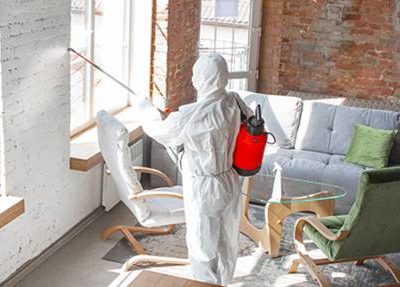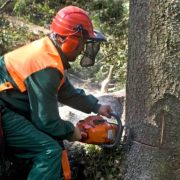Historical Context of Asbestos Use
Asbestos has been used extensively in various industries due to its heat-resistant properties. From the 1920s to the 1980s, it was commonly found in construction materials, insulation, and even household products. During this time, factories and plants often lacked proper ventilation systems, which meant airborne asbestos fibers lingered in the air for prolonged periods. Workers in these environments, without adequate protective gear, were at significant risk of inhaling these harmful fibers.
Impact of Poor Ventilation on Asbestos Exposure
Poor ventilation exacerbates the dangers of asbestos exposure. Without a means to effectively remove airborne fibers, these particles accumulate, increasing the likelihood of inhalation. In industrial settings, the issue was compounded by overcrowding and substandard ventilation systems. This lack of proper air circulation allowed asbestos fibers to remain suspended in the air, posing a continual threat to workers’ health.
Modern Implications for Homeowners
Today, the legacy of asbestos use still impacts homeowners, especially those in older buildings where asbestos-containing materials may still be present. Poor ventilation in such homes can lead to a higher risk of asbestos exposure if these materials are disturbed. Homeowners must be vigilant and consider professional inspections if they suspect the presence of asbestos. Proper ventilation systems can help reduce the risk, but the most effective measure remains the safe removal of asbestos by trained professionals.
Health Risks Associated with Asbestos in Poorly Ventilated Areas
Respiratory Diseases and Asbestos
Breathing in asbestos fibers can lead to serious health issues, particularly when ventilation is inadequate. Asbestos exposure is a well-known cause of respiratory diseases such as asbestosis, a chronic lung condition that results in scarring of lung tissue. This scarring makes it difficult for lungs to expand and contract normally, leading to breathing problems. Poorly ventilated spaces exacerbate this risk by allowing more fibers to remain airborne, increasing the likelihood of inhalation.
Long-term Health Effects
The long-term effects of asbestos exposure are severe and often fatal. Mesothelioma, a rare cancer affecting the lining of the lungs, heart, or abdomen, is directly linked to asbestos exposure. It can take decades for symptoms to appear, making early detection challenging. Additionally, lung cancer can develop in those exposed to asbestos, especially if they are smokers. The combination of smoking and asbestos exposure significantly raises the risk of lung cancer.
Preventive Measures for At-risk Populations
Preventing asbestos-related diseases involves minimizing exposure, especially in areas with poor ventilation. Key strategies include:
- Ensuring proper ventilation in buildings and workspaces to reduce airborne fiber concentration.
- Providing personal protective equipment (PPE) such as masks and coveralls to workers in high-risk areas.
- Regular health screenings for individuals who have been exposed to asbestos to detect any early signs of disease.
Taking these steps can significantly reduce the risk of developing serious health issues associated with asbestos exposure. For those already affected, medical monitoring and intervention are crucial to manage and mitigate health impacts.
The Role of Ventilation Systems in Mitigating Asbestos Exposure
Types of Ventilation Systems
Ventilation systems are crucial in reducing asbestos exposure, particularly in areas where asbestos fibers are likely to be present. There are several types of ventilation systems used to manage air quality:
- Natural Ventilation: This involves the use of natural forces like wind and thermal buoyancy to circulate air. Although cost-effective, it may not always be reliable in controlling asbestos fibers.
- Mechanical Ventilation: These systems use fans and ducts to move air in and out of a space. They are more effective in ensuring consistent air exchange, which helps in reducing asbestos concentration.
- Hybrid Systems: Combining both natural and mechanical methods, hybrid systems offer flexibility and efficiency, adapting to different environmental conditions.
Effectiveness of Ventilation in Reducing Risks
Proper ventilation can significantly lower the risk of asbestos exposure by diluting and removing airborne fibers. When installed and maintained correctly, these systems can help ensure that asbestos levels remain below harmful thresholds. However, the effectiveness of ventilation depends on several factors:
- The design and positioning of the ventilation components, which should be optimized for effective air circulation. Optimal positioning of ventilation components is crucial for effective air circulation in containment zones.
- Regular maintenance and inspection to ensure that the system functions as intended.
- Integration with other safety measures, such as the use of personal protective equipment (PPE).
Challenges in Implementing Effective Ventilation
While ventilation systems are essential, there are challenges in their implementation:
- Cost: Installing and maintaining high-quality ventilation systems can be expensive, which may deter some property owners.
- Complexity: Designing a system that effectively mitigates asbestos exposure requires expertise and careful planning.
- Compliance: Adhering to regulations and standards can be challenging, especially for older buildings that were not originally designed with modern ventilation systems in mind.
In summary, while ventilation systems play a critical role in mitigating asbestos exposure, their effectiveness is contingent upon proper design, implementation, and maintenance. Addressing these challenges is vital to ensure that these systems can provide the necessary protection against asbestos-related health risks.
Occupational Hazards: Asbestos and Ventilation in Industrial Settings
High-risk Occupations
In industrial settings, certain jobs have historically posed a higher risk of asbestos exposure due to the materials and processes involved. Among these occupations are factory and plant workers, who often deal with machinery, insulation, and construction materials laden with asbestos. Other high-risk jobs include:
- Chemical plant workers
- Insulators
- Boilermakers
- Auto mechanics
- Oil rig and refinery workers
- Steelworkers
- Welders
- Sheet metal workers
- Asbestos products manufacturers
These workers were often exposed to asbestos without adequate protective gear, increasing their risk of developing serious health conditions like mesothelioma.
Historical Industrial Practices
Between the 1920s and 1980s, the use of asbestos in industrial environments was rampant. During this period, poor ventilation systems in factories and plants allowed asbestos fibers to linger in the air, leading to significant exposure risks. The work involved in these environments, such as smelting, forging, and sandblasting, further contributed to the release of asbestos fibers. Unfortunately, employers often failed to provide necessary safety measures like respirators and overalls, leaving workers vulnerable.
Current Safety Standards
Today, there are stricter regulations and safety standards in place to protect workers from asbestos exposure. Modern industrial practices require the use of improved ventilation systems to ensure that airborne asbestos fibers are effectively removed from workspaces. Additionally, workers are now equipped with personal protective equipment (PPE) to minimize inhalation risks. Despite these advancements, ongoing vigilance is necessary to prevent exposure, especially in older facilities where asbestos materials may still be present.
Secondary Exposure: Bringing Asbestos Home
Family Risks from Occupational Exposure
Secondary asbestos exposure is a real threat, especially when workers inadvertently carry asbestos fibers home. These fibers cling to clothing, hair, and skin, posing a risk to family members. When workers bring home asbestos fibers, family members are unknowingly exposed to these harmful particles. This exposure can lead to serious health issues, including mesothelioma and lung cancer, even if the family members never directly handle asbestos.
Preventive Strategies for Families
To minimize the risk of secondary exposure, several preventive measures can be taken:
- Change clothes before leaving the workplace to avoid bringing asbestos fibers home.
- Shower and wash thoroughly at work if facilities are available.
- Use protective gear and follow safety protocols diligently to reduce fiber accumulation on clothing and skin.
Case Studies of Secondary Exposure
There have been numerous cases where secondary exposure has led to serious health problems. These cases highlight the importance of awareness and preventive measures. Families of workers in industries dealing with asbestos need to be vigilant about the risks. Learning from these case studies can help in understanding the gravity of secondary exposure and implementing effective prevention strategies.
Legal and Regulatory Framework Surrounding Asbestos and Ventilation
Key Legislation and Guidelines
When it comes to asbestos, the government has put in place a range of laws to protect people from exposure. These laws aim to keep asbestos fibers from becoming airborne, especially in places where people work. The Clean Air Act and the Occupational Safety and Health Administration (OSHA) regulations are among the most important. They set strict limits on how much asbestos can be in the air and require companies to follow safety measures.
Here’s a quick look at some key points:
- The Environmental Protection Agency (EPA) enforces the Clean Air Act, which limits asbestos emissions during demolition and renovation.
- OSHA sets workplace standards to ensure that workers are not exposed to unsafe levels of asbestos.
- The Asbestos Hazard Emergency Response Act (AHERA) requires schools to inspect for asbestos and take action to reduce exposure.
Role of Regulatory Bodies
Regulatory bodies play a crucial role in ensuring that asbestos laws are followed. The EPA and OSHA are the main players here. They conduct inspections and can impose penalties if companies don’t comply with the rules. The regulations are established to protect workers and the public from asbestos exposure, imposing significant fines and penalties for violations. These agencies also provide guidance and resources to help organizations understand and meet their obligations.
Legal Recourse for Affected Individuals
For those who have been harmed by asbestos exposure, there are legal options available. Individuals can file lawsuits against companies that failed to protect them from asbestos. These cases often involve proving that the company knew about the asbestos risk but did nothing to mitigate it. Victims can seek compensation for medical costs, lost wages, and other damages. It’s important for affected individuals to consult with legal experts who specialize in asbestos-related cases to explore their options.
Technological Advances in Asbestos Detection and Ventilation
Innovations in Asbestos Detection
In recent years, technology has taken huge strides in identifying asbestos presence. One of the most groundbreaking developments is the use of advanced mapping technologies like drones and satellite imagery. These tools help to pinpoint and map asbestos-contaminated areas, which is crucial for effective management. Moreover, infrared and thermal cameras have become essential in detecting hidden asbestos fibers that are not visible to the naked eye. These cameras work by identifying temperature variations caused by asbestos materials, which can be particularly useful in older buildings where asbestos might be lurking behind walls or ceilings.
Smart Ventilation Solutions
Asbestos management isn’t just about detection; ventilation plays a key role in reducing exposure risks. Today’s smart ventilation systems are designed to improve air quality by continuously monitoring and adjusting airflow. These systems use sensors to detect harmful particles, including asbestos, and automatically increase ventilation to ensure a safer environment. This not only helps in keeping asbestos fibers at bay but also maintains overall indoor air quality.
Future Trends in Asbestos Management
Looking ahead, the integration of artificial intelligence (AI) in both detection and ventilation systems is expected to revolutionize asbestos management. AI sensors can quickly analyze air samples and provide real-time data on asbestos levels, allowing for immediate action. Furthermore, the use of drones equipped with AI technology is anticipated to enhance inspections, making them faster and more accurate. These advancements underscore the importance of regular risk assessments and the need for continuous innovation in asbestos management.
Public Awareness and Education on Asbestos Risks
Importance of Public Education
Public education plays a key role in reducing asbestos exposure. Understanding the dangers associated with asbestos is essential for everyone, from homeowners to workers. Asbestos fibers, when inhaled, can lead to serious health issues like lung cancer and mesothelioma. Educating the public about these risks can help prevent exposure. Programs should focus on identifying asbestos-containing materials in homes and workplaces and understanding the conditions that make asbestos dangerous. Community workshops and informational sessions can be effective ways to spread this knowledge.
Community Programs and Initiatives
Community initiatives are vital in spreading awareness about asbestos risks. Local governments and health organizations can organize events to educate the public. These programs may include:
- Awareness Training for maintenance and custodial staff who might encounter asbestos-containing materials during their work. Such training can cover the basics of asbestos, its health effects, and protective measures (Type 1: Awareness Training).
- Public health campaigns that provide information on how to safely manage asbestos in homes and workplaces.
- Partnerships with schools to educate students about asbestos and its risks, ensuring the next generation is informed.
Resources for Homeowners and Workers
There are numerous resources available for those wanting to learn more about asbestos. Organizations dedicated to asbestos education and prevention offer a wealth of information. They focus on educating both the public and medical professionals about asbestos-related diseases and prevention strategies, while also supporting research for early detection (educating the public and medical professionals). Homeowners can access guides on identifying and managing asbestos in their homes, and workers can find information on protective measures and safety standards. It’s important to utilize these resources to stay informed and protected.
Case Studies: Impact of Poor Ventilation on Asbestos Exposure
Notable Historical Cases
In the past, several industries faced significant challenges with asbestos exposure due to poor ventilation. Navy ships, for instance, presented significant asbestos exposure risks, particularly in poorly ventilated areas such as engine and boiler rooms. This concentrated exposure led to serious health concerns for personnel serving on these vessels. Similarly, older factories, especially those operating between 1920 and 1980, often lacked adequate ventilation systems, allowing asbestos fibers to linger in the air for extended periods. Workers in these environments were unknowingly inhaling these fibers, leading to a rise in asbestos-related diseases like mesothelioma and lung cancer.
Lessons Learned from Past Incidents
The lessons from these historical cases are profound. They underscore the importance of having effective ventilation systems in place. Here are a few takeaways:
- Regular maintenance of ventilation systems can significantly reduce the risk of asbestos exposure.
- Implementation of protective measures, such as providing respirators and overalls, is crucial for worker safety.
- Routine health screenings for workers in high-risk environments can help in early detection and treatment of asbestos-related conditions.
Implications for Future Safety Protocols
Looking forward, the implications of these case studies are clear. Industries must prioritize the installation and maintenance of efficient ventilation systems. Moreover, there should be a focus on:
- Developing stricter safety regulations to ensure workplaces are free from asbestos risks.
- Educating workers and employers about the dangers of asbestos and the importance of using protective gear.
- Encouraging industries to adopt new technologies for asbestos detection and removal to safeguard worker health.
These measures not only protect workers but also help prevent secondary exposure, where family members might be at risk due to asbestos fibers brought home on clothing. By learning from the past, industries can better prepare for a safer future.
The Economic Impact of Asbestos and Poor Ventilation
Cost of Health Care and Treatment
The financial burden on healthcare systems due to asbestos-related diseases is immense. Treating conditions like lung cancer and mesothelioma can be extremely costly, often requiring long-term medical care and rehabilitation. Patients may face:
- Expensive surgeries and chemotherapy sessions
- Long hospital stays and frequent doctor visits
- Ongoing medication and therapy costs
These expenses not only affect the patients and their families but also put a strain on public health resources.
Economic Burden on Industries
Industries that historically relied on asbestos have faced significant economic challenges. The need for asbestos removal in ships and other industrial settings has led to:
- Increased operational costs due to compliance with safety regulations
- Legal fees and settlements from lawsuits filed by affected workers
- Loss of productivity during asbestos abatement procedures
Companies must also invest in training and protective equipment to prevent further exposure, which adds to their financial burdens.
Financial Assistance and Compensation Options
For those affected by asbestos exposure, financial assistance is crucial. Various compensation programs and legal avenues are available to help ease the economic impact. These include:
- Workers’ compensation claims for occupational exposure
- Government-funded health programs for asbestos victims
- Legal settlements from lawsuits against negligent companies
Navigating these options can be complex, but they provide essential support for victims and their families, helping them cope with the financial aftermath of asbestos exposure.
Extended Resources













Comments